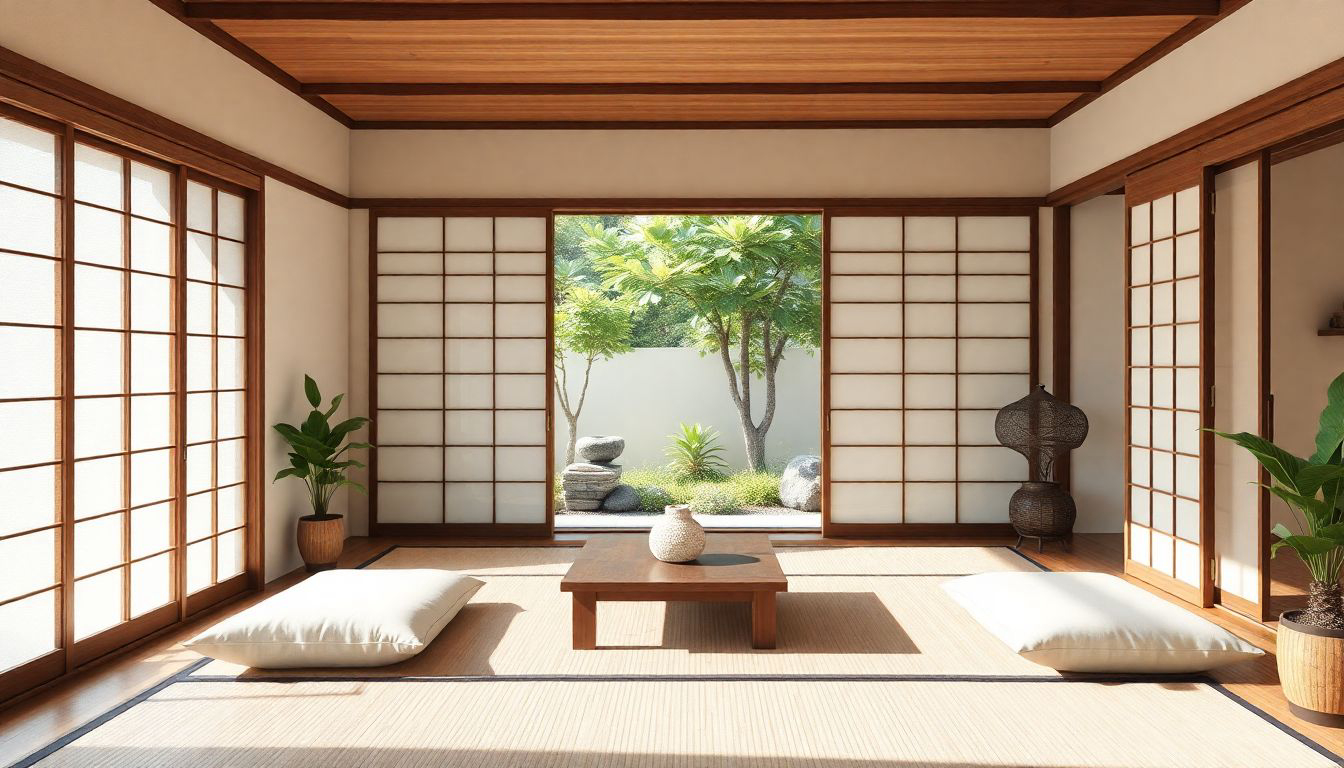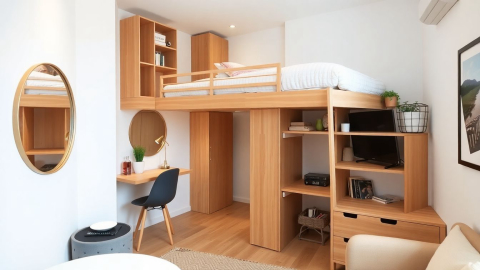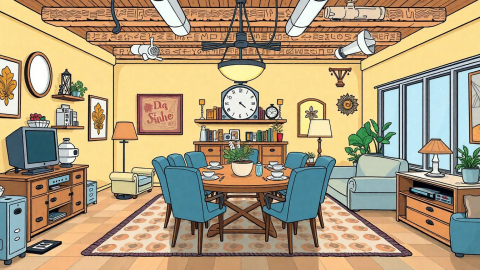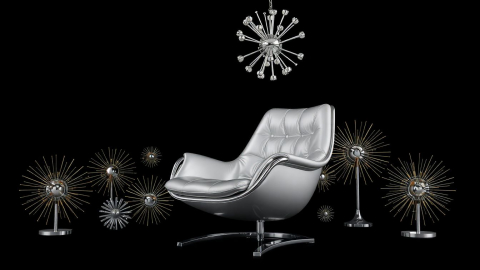The Art of Zen: Exploring Japanese Interior Design

In the realm of interior design, few styles captivate the imagination quite like Japanese aesthetics. Rooted in centuries of tradition yet constantly evolving, Japanese interior design embodies a unique blend of simplicity, functionality, and harmony with nature. From the tranquil spaces of traditional tea houses to the cutting-edge minimalism of modern urban apartments, Japanese design principles continue to inspire and influence global trends. This exploration delves into the essence of Japanese interior design, uncovering its core philosophies, historical influences, and contemporary interpretations that make it a timeless source of inspiration for designers and homeowners alike.
The Essence of Japanese Design: Balance and Harmony
At the heart of Japanese interior design lies the concept of 'Ma' - a principle that focuses on the balance between available space and the objects within it. This philosophy aims to create clear, uncluttered spaces that foster a sense of tranquility and comfort for both inhabitants and visitors. As Mihoko Iida, managing editor of Vogue Japan, explains, "When Japanese people look at a house, they tend first to look at where the sunlight enters the room, or how the wind travels through the entrance. In other words, the interior is dictated by external circumstances."
This unique approach to design reflects a deep-rooted respect for nature and an understanding of the home as a sanctuary from the outside world. Unlike Western interior design, which often prioritizes personal expression and aesthetic preferences, traditional Japanese interiors place greater emphasis on communal function and harmony with the surrounding environment.
Historical Influences and Modern Interpretations
The evolution of Japanese interior design is a fascinating journey that spans centuries of cultural, social, and technological changes. From the austere simplicity of Zen Buddhist temples to the practical efficiency of merchant houses during the Edo period, Japanese design has always been shaped by a combination of spiritual beliefs, practical needs, and environmental constraints.
In the post-World War II era, Japan experienced rapid urbanization and industrialization, leading to the widespread adoption of prefabricated homes. While this trend initially limited the scope for personalized interior design, it also paved the way for innovative solutions to space constraints and functionality.
Today, modern Japanese homes showcase a diverse range of styles that blend traditional elements with contemporary aesthetics. As Shorna-Kay Richards, the Jamaican ambassador to Japan, observed, "There is such a variety and people's tastes are so rich and diverse." This diversity is evident in the growing trend of multi-functional spaces that combine work and living areas under one roof, reflecting the changing lifestyles of urban Japanese residents.
Key Elements of Japanese Interior Design
1. Minimalism and Simplicity
One of the most recognizable aspects of Japanese interior design is its emphasis on minimalism. This aesthetic preference is not just about creating visually pleasing spaces but also reflects deeper philosophical principles rooted in Zen Buddhism. By reducing clutter and focusing on essential elements, Japanese interiors create a sense of calm and clarity that allows inhabitants to focus on what truly matters.
2. Natural Materials and Textures
The use of natural materials such as wood, bamboo, and paper is a hallmark of Japanese interior design. These elements not only bring warmth and texture to a space but also create a strong connection with the natural world. As noted in the analysis of Japanese interiors, "Walls, doors, screen grids, and frames are all made of natural wood. The most common woods being western versions of maple, cypress, hemlock, and red pine."
3. Flexible Space and Functionality
Japanese homes often feature flexible spaces that can be adapted to different purposes throughout the day. This is exemplified by the use of sliding doors (shoji) and removable floor mats (tatami), which allow rooms to be easily reconfigured. This adaptability is particularly valuable in urban environments where space is at a premium.
4. Harmony with Nature
The integration of nature into living spaces is a fundamental aspect of Japanese design. Large windows that frame natural views, indoor gardens, and the use of natural light are common features that blur the boundaries between indoor and outdoor spaces. As seen in examples like the Peninsula House in the Kanto region, designed by Mount Fuji Architects Studio, the surrounding landscape becomes an integral part of the interior experience.
Contemporary Trends in Japanese Interior Design
While traditional principles continue to influence Japanese interiors, contemporary designers are finding innovative ways to adapt these concepts to modern lifestyles. Some notable trends include:
1. Multi-functional Spaces
With the rise of remote work and the need for versatile living environments, many Japanese homes now incorporate workspaces, shops, or even public areas within residential settings. For example, the home designed by Kaori Kikushima and Ikki Nagasawa of knof seamlessly integrates an office space within a residential apartment.
2. Technological Integration
Modern Japanese homes are increasingly incorporating smart home technologies and energy-efficient systems. However, these technological advancements are often seamlessly integrated into the design, maintaining the clean, uncluttered aesthetic that characterizes Japanese interiors.
3. Sustainable Design Practices
As environmental concerns become more pressing, Japanese designers are exploring sustainable materials and energy-efficient designs. This focus on sustainability aligns well with the traditional Japanese reverence for nature and resourcefulness.
The Global Influence of Japanese Design
The principles of Japanese interior design have had a profound impact on global design trends. The concept of minimalism, popularized by brands like Muji, has resonated with consumers worldwide who are seeking simplicity and functionality in their living spaces. As noted in the analysis, "Muji goods were distinguished by their clean forms, monochrome coloring and functionality. Unsurprisingly, the company developed a near cult following among design aficionados worldwide."
Moreover, the Japanese approach to creating harmony between indoor and outdoor spaces has inspired architects and designers around the world to rethink the relationship between built environments and nature. This influence can be seen in the growing popularity of biophilic design and the increasing emphasis on creating spaces that promote well-being and connection with the natural world.
Conclusion: The Timeless Appeal of Japanese Interior Design
Japanese interior design offers a unique perspective on creating living spaces that are both functional and deeply connected to nature and cultural heritage. Its emphasis on simplicity, flexibility, and harmony continues to resonate in an increasingly complex and fast-paced world. As we look to the future, the principles of Japanese design offer valuable insights into creating sustainable, adaptable, and spiritually nourishing environments.
Whether applied in their purest form or reinterpreted through a contemporary lens, the elements of Japanese interior design provide a timeless source of inspiration for creating spaces that are not just visually appealing but also enhance the quality of life for their inhabitants. As we continue to navigate the challenges of modern living, the wisdom embedded in Japanese design principles offers a path towards creating homes that are truly sanctuaries of peace and harmony.
References and Further Reading
- Iida, M. (2022). Japanese Interiors. Phaidon.
- "Inside Japan's most minimalist homes" by Lindsay Baker, BBC Culture.
- "Japanese Interior Design, The Concept And Decorating Ideas" by Andreea Dima, Impressive Interior Design.
- "How 'good design' became commonplace in Japan" by Staff Writer, Nikkei Asia.
- "The changing face of Japanese homes" by Mihoko Iida, Nikkei Asia.
These resources offer deeper insights into the world of Japanese interior design, from historical perspectives to contemporary applications, providing a comprehensive understanding of this rich and influential design tradition.
More Articles

Maximizing Style and Function in Small Room Design: Expert Tips for Compact Living

Moroccan Interior Design: A Satirical Journey Through the Land of Poufs and Patterns

The Great Dining Room Debacle: A Satirical Guide to Overengineered Eating Spaces

The Haunting Allure of Gothic Architecture: A Journey Through Time and Aesthetics

Space Age Interior Design: Where Retrofuturism Meets Domestic Bliss
